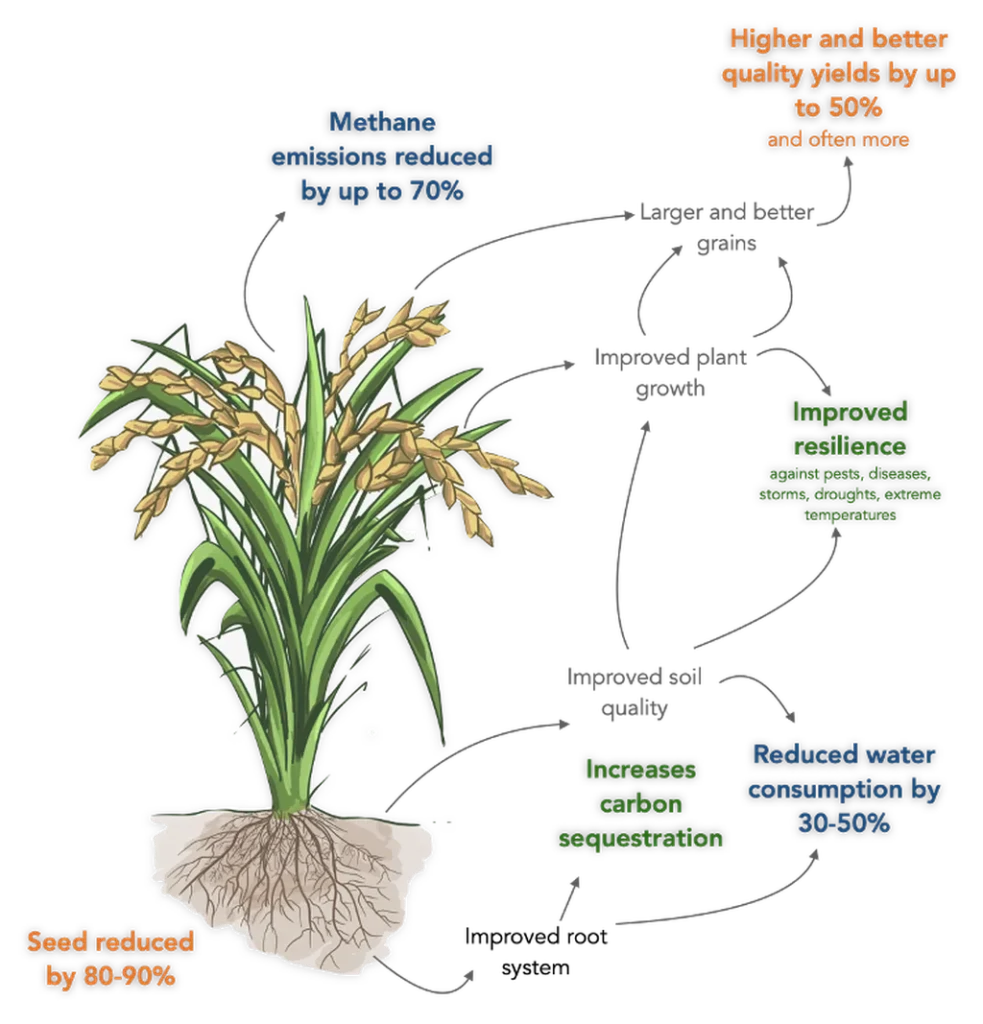In the heart of global agriculture, a quiet revolution is taking root—one that promises to boost rice yields, slash water use, and curb greenhouse gas emissions. The System of Rice Intensification (SRI), a sustainable farming method, is gaining traction in major rice-producing countries, offering a beacon of hope for food security and environmental sustainability. A comprehensive review published in *Discover Food* sheds light on the transformative potential of SRI, highlighting its impacts on productivity, resource efficiency, and ecological health.
The review, led by Stanslaus Terengia Materu of the Department of Civil and Water Resources Engineering at Sokoine University of Agriculture, synthesizes findings from diverse regions, including Bangladesh, India, Myanmar, Benin, Kenya, and Tanzania. At the core of SRI are four key practices: transplanting young seedlings (8–12 days old), wider plant spacing (20×20 cm or 25×25 cm), alternate wetting and drying (AWD) irrigation, and organic nutrient management. These practices have been shown to significantly enhance rice yields, with increases ranging from 10% to a staggering 114% compared to conventional methods.
One of the most compelling aspects of SRI is its water efficiency. AWD irrigation, a cornerstone of the system, reduces water use by 40–74%, a critical advantage in regions where water scarcity is a growing concern. “This is not just about increasing yields; it’s about doing more with less,” says Materu. “SRI offers a pathway to sustainable rice production that aligns with the needs of both farmers and the environment.”
The environmental benefits of SRI extend beyond water conservation. The system has been shown to reduce methane emissions by up to 70%, a significant contribution to the fight against climate change. Enhanced soil microbial activity and improved root development also increase plant vigor and resilience to drought and pests, further bolstering the system’s appeal.
However, the path to widespread adoption is not without its challenges. SRI’s labor-intensive practices, knowledge gaps, and limited access to training and irrigation infrastructure pose significant barriers. “While the benefits are clear, we must address the practical challenges that farmers face,” Materu notes. “This includes developing labor-saving technologies and providing robust extension services to support adoption.”
Mechanization offers a promising solution to the labor-intensive nature of SRI. Drum seeders and mechanical weeders, for instance, can reduce labor by up to 97% and 28.3%, respectively. However, access to these technologies remains limited, particularly in resource-constrained regions.
The commercial impacts of SRI on the agriculture sector are profound. By enhancing productivity and resource efficiency, SRI can boost farmers’ incomes and contribute to food security. The system’s environmental benefits also align with the growing demand for sustainably produced agricultural products, opening up new market opportunities.
Looking ahead, the review calls for further research to optimize SRI for diverse agro-ecological conditions and develop affordable labor-saving technologies. Strengthening policy support and extension services will also be crucial to enhancing adoption and long-term impacts on soil health, carbon sequestration, and nutritional outcomes.
As the global population continues to grow, the need for sustainable and productive agricultural systems has never been greater. SRI offers a compelling solution, one that balances the needs of people, the planet, and the economy. With continued innovation and support, this quiet revolution in rice farming could well shape the future of global agriculture.

